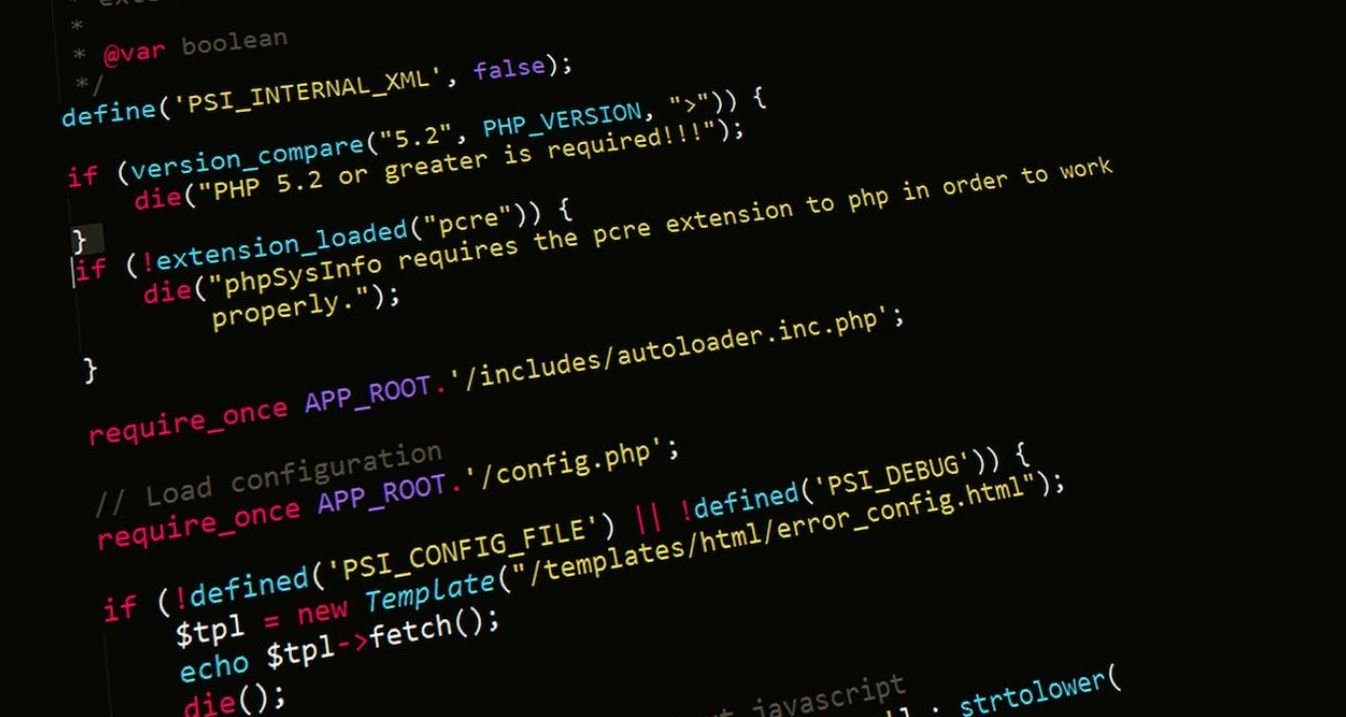Open Source AI: Empowering Innovation and Collaboration
In recent years, open source artificial intelligence (AI) has revolutionized the way we develop and deploy intelligent systems. The open source model allows for collaboration, transparency, and customization, making AI accessible to a broader audience and fostering innovation across various industries.
Key Takeaways:
- Open source AI enables collaboration, transparency, and customization.
- It promotes innovation and accelerates the development of intelligent systems.
- Open source AI provides a cost-effective alternative to proprietary solutions.
One of the primary benefits of **open source AI** is its ability to encourage collaboration among researchers, developers, and enthusiasts. Through shared repositories and platforms such as GitHub, experts from around the world can collaborate on AI projects, share code, and build upon each other’s work. This collaborative approach accelerates the development process and leads to more robust and advanced AI solutions.
Moreover, the **transparency** inherent in open source AI allows for scrutiny and peer review, ensuring the reliability and safety of the algorithms and models being developed. This transparency is essential, especially in critical applications such as healthcare or autonomous vehicles, where the consequences of errors can be significant.
Open source AI also promotes **customization**, enabling organizations to tailor AI solutions to their specific needs and requirements. Companies can extend and modify existing models, adapting them to their unique datasets or use cases. This flexibility gives organizations a competitive advantage by allowing them to build AI solutions that perfectly align with their objectives.
Democratizing AI Development
- Open source AI empowers developers and researchers of all backgrounds.
Traditional AI solutions often come with significant costs, licensing fees, and proprietary restrictions that limit access to those with ample resources. In contrast, open source AI provides an affordable and accessible alternative, democratizing AI development. It opens up opportunities for developers, startups, and researchers with limited budgets to leverage state-of-the-art AI technologies and contribute to the field.
Developers and researchers can tap into open source AI libraries, frameworks, and tools like TensorFlow, PyTorch, and scikit-learn, which offer a rich ecosystem of pre-built models and algorithms. This wealth of resources allows for faster prototyping and experimentation, enabling developers to iterate and improve their AI applications more efficiently. The availability of open source AI also encourages knowledge-sharing and learning, fostering a community of practitioners who collectively push the boundaries of AI innovation.
Open Source AI vs. Proprietary Solutions
- Open source AI offers cost-effective alternatives to proprietary solutions.
When considering AI implementation, organizations often face the choice between open source and proprietary solutions. While proprietary AI solutions may provide convenient packages and comprehensive support, they can be costly and lack the flexibility of open source offerings.
Open source AI allows for rapid prototyping, experimentation, and customization without the burden of licensing fees. Organizations can leverage existing open source models, adapt them to their specific needs, and even contribute back improvements to the community. This collaborative approach significantly reduces the cost of development and accelerates time-to-market.
Table 1: Open Source AI Libraries and Frameworks
| Library/Framework | Key Features |
|---|---|
| TensorFlow | Highly flexible, scalable, and widely adopted. |
| PyTorch | Dynamic and intuitive deep learning framework. |
| scikit-learn | Simple and efficient tools for data mining and analysis. |
Furthermore, open source AI fosters innovation through its community-driven nature. Developers around the world collaborate, share insights, and push the boundaries of what AI can achieve. Additionally, the collaborative nature of open source AI allows for the rapid exchange and integration of emerging techniques and algorithms, ensuring that the community stays at the cutting edge of AI research and development.
*In a world where technology evolves rapidly, open source AI provides an ecosystem that evolves with it.*
Table 2: Advantages of Open Source AI
| Advantage | Description |
|---|---|
| Collaboration | Multiple experts contribute and build upon each other’s work. |
| Transparency | Algorithms and models are open to scrutiny and peer review. |
| Customization | Adaptable to specific needs and requirements. |
While open source AI offers numerous benefits, organizations should carefully consider their specific requirements and resources when deciding whether to adopt open source or proprietary solutions. Proprietary solutions may offer more comprehensive support and integration options, but open source AI allows for greater flexibility, customization, and innovation.
Table 3: Considerations for Choosing AI Solutions
- Technical expertise and available resources
- Needed integration with existing systems
- Costs and budget limitations
- Flexibility and customization requirements
Open source AI has the power to democratize AI development, foster innovation, and provide cost-effective alternatives to proprietary solutions. It opens up new possibilities by allowing developers and organizations to collaborate, customize, and leverage state-of-the-art AI technologies. As the AI landscape continues to evolve, open source AI will play a crucial role in driving advancements and empowering a wider range of stakeholders.

Common Misconceptions
Open Source AI
First misconception: Open source AI is not as powerful as proprietary solutions.
Many people mistakenly believe that open source AI is less capable than its proprietary counterparts. However, this is not true as open source AI platforms often have a wide range of capabilities and can be just as powerful as proprietary solutions.
- Open source AI allows for collective intelligence and collaboration, leading to continuous improvement and innovation.
- Open source AI platforms often have a large and active community of developers contributing to its development and maintenance.
- Open source AI solutions are flexible and customizable, allowing users to tailor them to their specific needs.
Second misconception: Open source AI is not secure.
There is a common misconception that open source AI may have security vulnerabilities compared to proprietary solutions. However, open source AI projects are typically subject to extensive peer review and scrutiny, which often makes them more secure than closed-source alternatives.
- The transparency of open source AI allows for greater trust and scrutiny by the community, facilitating the rapid identification and resolution of security issues.
- Open source AI projects often have a dedicated security team that actively monitors and addresses potential vulnerabilities.
- With open source AI, users have more control over their security measures and can implement additional protocols or modifications to enhance security.
Third misconception: Open source AI is difficult to use and requires advanced programming skills.
Many individuals assume that working with open source AI requires extensive coding knowledge and advanced programming skills. However, open source AI platforms are designed to be user-friendly and accessible to a wide range of users, including those without extensive technical expertise.
- Open source AI platforms often provide comprehensive documentation, tutorials, and community support to help users get started and overcome any challenges.
- Users can often find pre-built models and frameworks that simplify the adoption and use of open source AI.
- Open source AI is constantly evolving, with new tools and libraries aimed at simplifying the development process and reducing the need for intricate coding knowledge.
Fourth misconception: Open source AI is not suitable for enterprise-level applications.
Some organizations believe that open source AI is only suitable for small-scale or experimental projects and is not robust or scalable enough for enterprise-level applications. However, numerous successful deployments of open source AI in large organizations prove this misconception wrong.
- Open source AI platforms often provide enterprise-grade features such as scalability, fault tolerance, and high performance.
- Many open source AI projects have commercial support options available from both the open source community and companies that specialize in providing enterprise-level services.
- Large organizations can adapt and customize open source AI solutions to their specific requirements, ensuring they meet the necessary enterprise standards.
Fifth misconception: Open source AI lacks innovation and is limited in terms of cutting-edge technologies.
Contrary to popular belief, open source AI is a hotbed of innovation and is often at the forefront of new advancements in the field. The open collaboration and wide adoption of open source AI foster the development of cutting-edge technologies.
- Open source AI projects often encourage experimentation and the exploration of new ideas, pushing the boundaries of what is possible.
- The open nature of these projects allows for rapid dissemination and adoption of novel AI techniques and algorithms.
- Open source AI provides a platform for developers worldwide to contribute their innovative ideas and research, fueling continuous advancements.

Advantages of Open Source AI
Open Source AI offers numerous advantages over proprietary AI solutions. In this table, we explore four key benefits that make Open Source AI an attractive choice for both individuals and organizations.
| Advantages | Description |
|---|---|
| Flexibility | Open Source AI allows developers to customize the technology to suit their specific needs, leading to more flexible and adaptable AI solutions. |
| Transparency | With Open Source AI, users have access to the underlying code, enabling greater transparency and fostering trust in the technology. |
| Collaboration | The open nature of Open Source AI encourages collaboration among developers, resulting in faster innovation and shared knowledge. |
| Cost Savings | By eliminating licensing fees, Open Source AI significantly reduces the cost barrier for accessing advanced AI technologies. |
Open Source AI Frameworks
There is a wide range of Open Source AI frameworks available that empower developers to build complex AI systems. This table presents five popular frameworks along with their key features.
| Framework | Key Features |
|---|---|
| TensorFlow | Extensive ecosystem, support for multiple programming languages, and distributed computing capabilities. |
| PyTorch | Dynamic computation graph, strong GPU acceleration, and seamless integration with Python. |
| Keras | Beginner-friendly API, built-in support for various neural network architectures, and extensive documentation. |
| Caffe | Efficient for image recognition tasks, pre-trained models available, and support for multiple GPUs. |
| Theano | Efficient symbolic differentiation, extensive mathematical operations support, and GPU/CPU optimization. |
Open Source AI Applications
Open Source AI is being applied in a wide array of fields, transforming industries and solving complex problems. This table highlights five notable applications of Open Source AI.
| Application | Description |
|---|---|
| Natural Language Processing (NLP) | Open Source AI enables efficient language translation, sentiment analysis, and chatbot development. |
| Computer Vision | Advanced image and video analysis, object detection, and facial recognition systems are made possible through Open Source AI. |
| Robotics | Open Source AI frameworks drive the development of intelligent robots capable of autonomously performing complex tasks. |
| Data Analytics | Open Source AI algorithms contribute to more accurate predictions, personalized recommendations, and data-driven insights. |
| Healthcare | Open Source AI is revolutionizing healthcare with applications such as disease diagnosis, medical imaging analysis, and drug discovery. |
Open Source AI Community
Open Source AI owes its success to the vibrant community of developers, contributors, and enthusiasts who collaborate and support these initiatives. This table highlights five influential Open Source AI organizations and their contributions.
| Organization | Contributions |
|---|---|
| Google AI | Release of TensorFlow, advancements in machine learning research, and democratization of AI technology. |
| Facebook AI Research | Development of PyTorch, contributions to computer vision, and focus on ethical AI practices. |
| OpenAI | Pioneering work in reinforcement learning, development of GPT models, and commitment to AI safety. |
| Apache Software Foundation | Hosts several AI-related projects like Apache Spark, systemML, and Mahout, fostering innovation and collaboration. |
| Microsoft AI | Contributions to open-source deep learning frameworks, development of Visual Studio Code AI tools, and focus on responsible AI adoption. |
Licensing Models for Open Source AI
Open Source AI projects adopt different licensing models that dictate how the technology can be used, modified, and distributed. This table presents five common licensing models used in Open Source AI.
| Licensing Model | Description |
|---|---|
| MIT License | Permissive license that allows widespread usage, modification, and distribution with minimal restrictions. |
| GNU General Public License (GPL) | Copyleft license that ensures derived works also remain open source and freely accessible. |
| Apache License | Permissive license that places limited restrictions on usage and distribution of the software. |
| BSD License | Simple and permissive license that allows modification and distribution with minimal restrictions. |
| Creative Commons License | A range of licenses that allow flexibility in sharing, modifying, and building upon the work while respecting the original author’s rights. |
Open Source AI Adoption Trends
The adoption of Open Source AI technologies continues to grow rapidly across various industries. This table provides insights into five key adoption trends.
| Trend | Description |
|---|---|
| Increased Integration | Open Source AI is becoming an integral part of existing software systems, enhancing their capabilities and functionality. |
| Academic Research | Researchers and scientists widely adopt Open Source AI frameworks for innovative AI research and experimentation. |
| Startups leveraging AI | Many startups are utilizing Open Source AI to develop disruptive business models and innovative products. |
| Data-Driven Decision Making | Enterprises are increasingly relying on Open Source AI to derive insights from vast amounts of data, driving informed decision-making. |
| AI Democratization | Open Source AI is enabling individuals and organizations of all sizes to harness the power of AI without substantial financial investments. |
Challenges in Open Source AI
While Open Source AI offers immense potential, certain challenges need to be overcome for widespread adoption and success. This table highlights five prominent challenges faced by the Open Source AI community.
| Challenges | Description |
|---|---|
| Data Privacy | Ensuring data privacy and security while utilizing Open Source AI technologies remains a major concern. |
| Model Bias | Unintentional biases in AI models generated from open-source data can have negative real-world consequences. |
| Talent Gap | A shortage of skilled AI practitioners proficient in Open Source AI frameworks poses challenges for organizations. |
| Intellectual Property | Issues surrounding intellectual property rights and licensing can complicate the utilization and commercialization of Open Source AI projects. |
| Framework Complexity | The steep learning curve associated with certain Open Source AI frameworks can hinder their widespread adoption. |
Open Source AI Success Stories
Open Source AI has witnessed remarkable success stories across diverse applications. This table showcases five notable examples where Open Source AI has made a significant impact.
| Success Stories | Impact |
|---|---|
| OpenAI’s GPT-3 | Pioneering language generation capabilities, revolutionizing chatbots, and assisting in content creation. |
| TensorFlow’s ImageNet Challenge | Significant advancements in computer vision, enabling more accurate image recognition and object detection. |
| BERT: Google’s Neural Network | Revolutionizing language understanding, natural language processing, and search engine capabilities. |
| CERN’s Use of Open Source AI | Enhancing particle collision studies, accelerating data analysis, and contributing to fundamental scientific discoveries. |
| Diabetic Retinopathy Detection | Open Source AI models aiding in the early diagnosis of diabetic retinopathy through automated image analysis. |
Open Source AI is a transformative force, revolutionizing the world of Artificial Intelligence. It promotes collaboration, provides access to advanced AI technologies, and empowers individuals and organizations to innovate and solve complex problems. The tables presented in this article have highlighted the advantages, frameworks, applications, community, licensing models, adoption trends, challenges, and success stories related to Open Source AI. As Open Source AI continues to evolve, its future holds immense potential and promises a democratized AI landscape for all to explore and benefit from.
Frequently Asked Questions
Open Source AI
What is open source AI?
Where can I find open source AI software?
What are the benefits of open source AI?
Can I use open source AI for commercial purposes?
Is open source AI secure?
Are there any limitations to using open source AI?
Can I contribute to open source AI projects?
How can I ensure the quality of open source AI software?
Can I sell my own open source AI software?
Where can I get support for open source AI software?




